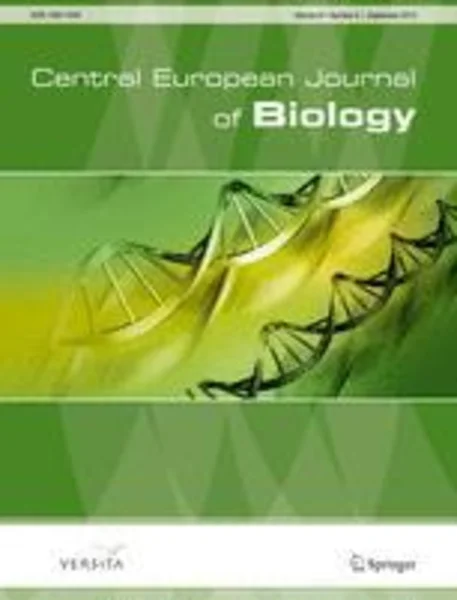-
association of mating-type with mycelium growth rate and genetic variability of fusarium culmorum
جزئیات بیشتر مقاله- تاریخ ارائه: 1392/07/24
- تاریخ انتشار در تی پی بین: 1392/07/24
- تعداد بازدید: 757
- تعداد پرسش و پاسخ ها: 0
- شماره تماس دبیرخانه رویداد: -
backgroundbarley is an important crop used widely in europe for food production, feed and malting.unfortunately it is often colonised by fungi from the fusarium genus. fusarium culmorum is a global pathogen causing root rot and crown rot in small-grain cereals, resulting in a reduction in yield and grain quality. f. culmorum produces the highly toxic chemicals trichothecenes. experimental
procedures
chemotypes and mating-type idiomorphs (mat) were identified using polymerase chain reactions (pcr) and genetic diversity was determined using sequence-related amplified polymorphism (srap) and random amplified polymorphic dna (rapd). physiological features such as mycelium growth rate were also evaluated.
results
as many as 94% of isolates was classified as a 3adon producing and only two isolates displayed niv chemotype. the average growth rate at 15°c and 25°c equalled 5.32 mm/day and 13.5 mm/day, respectively. the mat idiomorph amplification revealed that 60% of isolates possessed mat1-2idiomorph. among 32 obtained srap and rapd markers, eight were associated with mycelium growth rate.
conclusions
it was shown first time that f. culmorum isolates with mat1-2 idiomorph in the genome grew slower than these with mat1-1. high level of genetic variability was determined based on amplification of srap and rapd markers.
مقالات جدیدترین رویدادها
-
استفاده از تحلیل اهمیت-عملکرد در ارائه الگوی مدیریت خلاقیت سازمانی و ارائه راهکار جهت بهبود
-
بررسی تاثیر ارزش وجوه نقد مازاد بر ساختار سرمایه شرکت های پذیرفته شده در بورس اوراق بهادار تهران
-
بررسی تأثیر سطح افشای ریسک بر قرارداد بدهی شرکت های پذیرفته شده در بورس اوراق بهادار تهران
-
بررسی تأثیر رتبه بندی اعتباری مبتنی بر مدل امتیاز بازار نوظهور بر نقد شوندگی سهام با تأکید بر خصوصی سازی شرکت ها
-
تأثیر آمیخته بازاریابی پوشاک ایرانی بر تصویر ذهنی مشتری پوشاک ایرانی (هاکوپیان)
-
بررسی مولفه سه بعدی سرعت بر اثر استغراق در اطراف آبشکن سر سپری
-
بررسی جایگاه و نقش مدارس و خانواده در مقابله با آسیب های فضای سایبری
-
مکان یابی بهینه تولیدات پراکنده به منظور کاهش تلفات و بهبود پروفیل ولتاژ در سیستم توزیع با استفاده از الگوریتم ترکیبی ga-pso
-
development of nife-cnt and ni3fe-cnt nanocomposites by mechanical alloying
-
hydroaminomethylation of eugenol with di-n-butylamine catalyzed by rhodium complexes: bringing light on the promoting effect of brönsted acids
مقالات جدیدترین ژورنال ها
-
مدیریت و بررسی افسردگی دانش آموزان دختر مقطع متوسطه دوم در دروان کرونا در شهرستان دزفول
-
مدیریت و بررسی خرد سیاسی در اندیشه ی فردوسی در ادب ایران
-
واکاوی و مدیریت توصیفی قلمدان(جاکلیدی)ضریح در موزه آستان قدس رضوی
-
بررسی تاثیر خلاقیت، دانش و انگیزه کارکنان بر پیشنهادات نوآورانه کارکنان ( مورد مطالعه: هتل های 3 و 4 ستاره استان کرمان)
-
بررسی تاثیر کیفیت سیستم های اطلاعاتی بر تصمیم گیری موفق در شرکتهای تولیدی استان اصفهان (مورد مطالعه: مدیران شرکتهای تولیدی استان اصفهان)
-
بررسی قدرت تمیزی کمک طلبی تحصیلی، مشارکت فعّال در مدرسه و هوش موفق در تفکیک دانش آموزان با و بدون رفتارهای خودناتوان ساز تحصیلی
-
بررسی رابطه خلاقیت با عزت نفس کودکان کار شهر همدان
-
تحلیل طرح مهردانا در صنعت بیمه با روش تاپسیس
-
exploring the nexus between political risk and financial risk in the balkan countries: a wavelet-based nardl coherency analysis
-
sensitivity of direct runoff to curve number using the scs-cn method




سوال خود را در مورد این مقاله مطرح نمایید :